There isn’t a strong correlation between concealed carry rights and crime.
In 2024, there are several states with open carry and permitless concealed carry laws.
However, there isn’t a positive correlation between permitless carry and criminality.
The following sections explore crime rates and homicides in states with and without permitless concealed carry laws.
Report Highlights:
- There are 26 states with permitless concealed carry freedoms
- Washington, D.C., has the highest rate of firearm-related homicides even though it has strict carry laws
- 83% of states with permitless concealed carry have a homicide rate at or below the national average
- 45% of states with no permitless concealed carry laws have homicide rates above the national average
- 3 out of 5 of the safest five states in the U.S. have permitless concealed carry
- 2 out of 5 of the top five most dangerous states in the U.S. have permitless concealed carry, and 3 out of 5 require permits for concealed carry
- 84% of states have a lower violent crime rate in 2022 than they did before permitless concealed carry
States with Concealed Carry vs. Permit Required
State laws vary widely regarding when and how citizens can carry a concealed firearm.
Twenty-six U.S. states have permitless concealed carry, and Mississippi has some limitations regarding which calibers and how citizens can carry without a permit. However, nineteen states and Washington D.C. require permits for concealed carry of firearms.
Does Concealed Carry Reduce Crime
One of the more pressing questions about crime in the U.S. is whether permitless concealed carry reduces violent crimes and homicides. Unfortunately, we don’t have the data to support a conclusion on the subject.
However, several states with permitless concealed carry have lower crime rates today than they did before the passage of these new laws. Moreover, you’ll find the states with the highest and lowest crime rates have varying concealed carry laws.
By definition, only twenty-six states allow citizens to conceal carry firearms without a permit. Other states implement restrictions on how one can carry a firearm, and others require training and permits for any carry (open or concealed).
Moreover, it’s important to note that permitless concealed carry laws do not make it easier to obtain a firearm. Although state laws vary, Federal laws restrict certain individuals from purchasing and possessing firearms nationwide (even if purchased from private sellers).
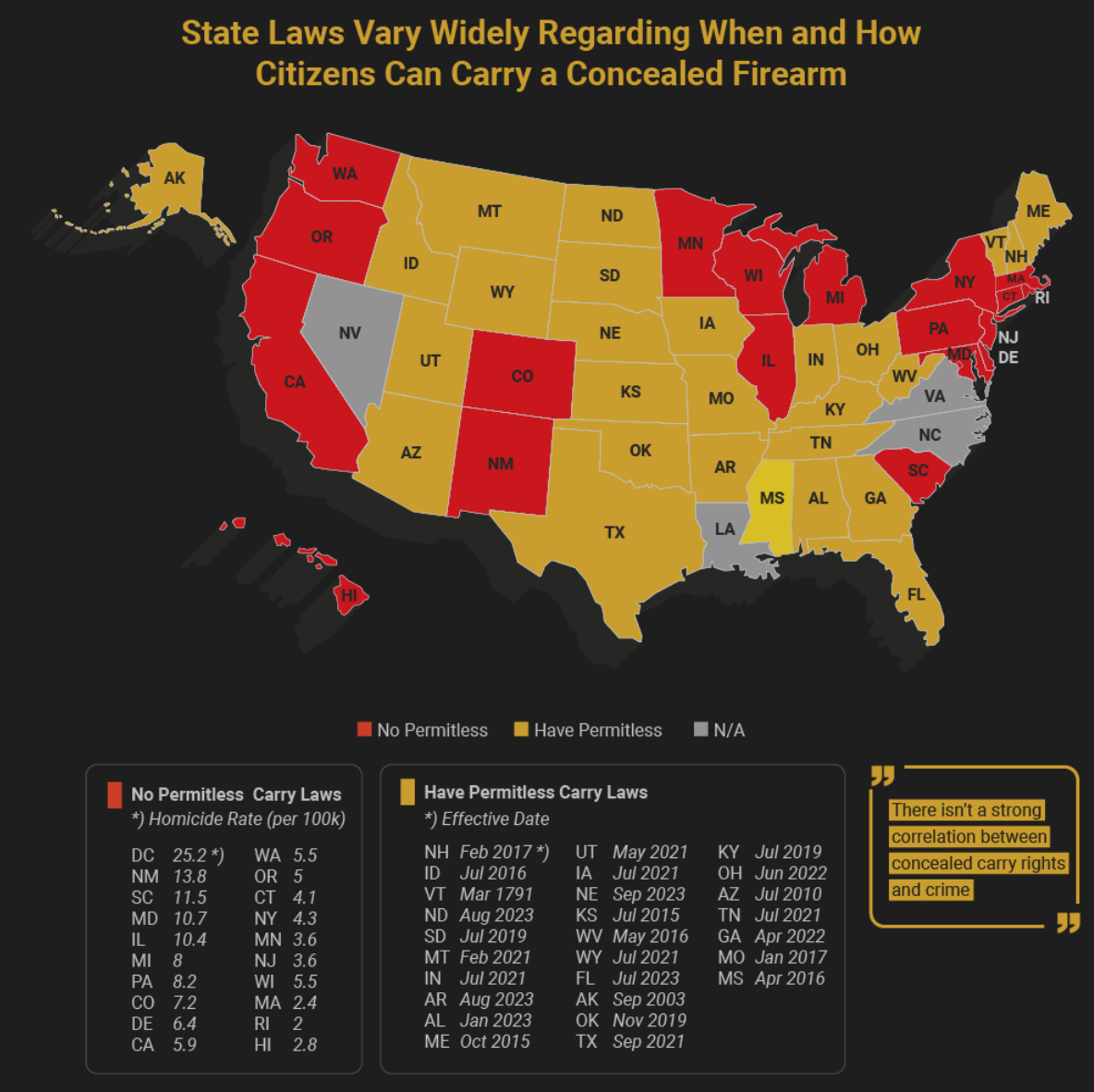
Concealed Carry Reduces Crime Stats
Due to many states converting to permitless concealed carry after January 2021, and delayed reporting from the FBI on violent crime rates, we are still discovering the effectiveness of permitless concealed carry on crime.
However, we can explore crime trends in states that had permitless carry prior to January 2021.
83.3% of states that passed permitless concealed carry had a violent crime rate lower than before the bill’s passage. 84% of all states that have adopted concealed permitless carry laws have a lower violent crime rate in 2022 than they did the year before adopting the laws.
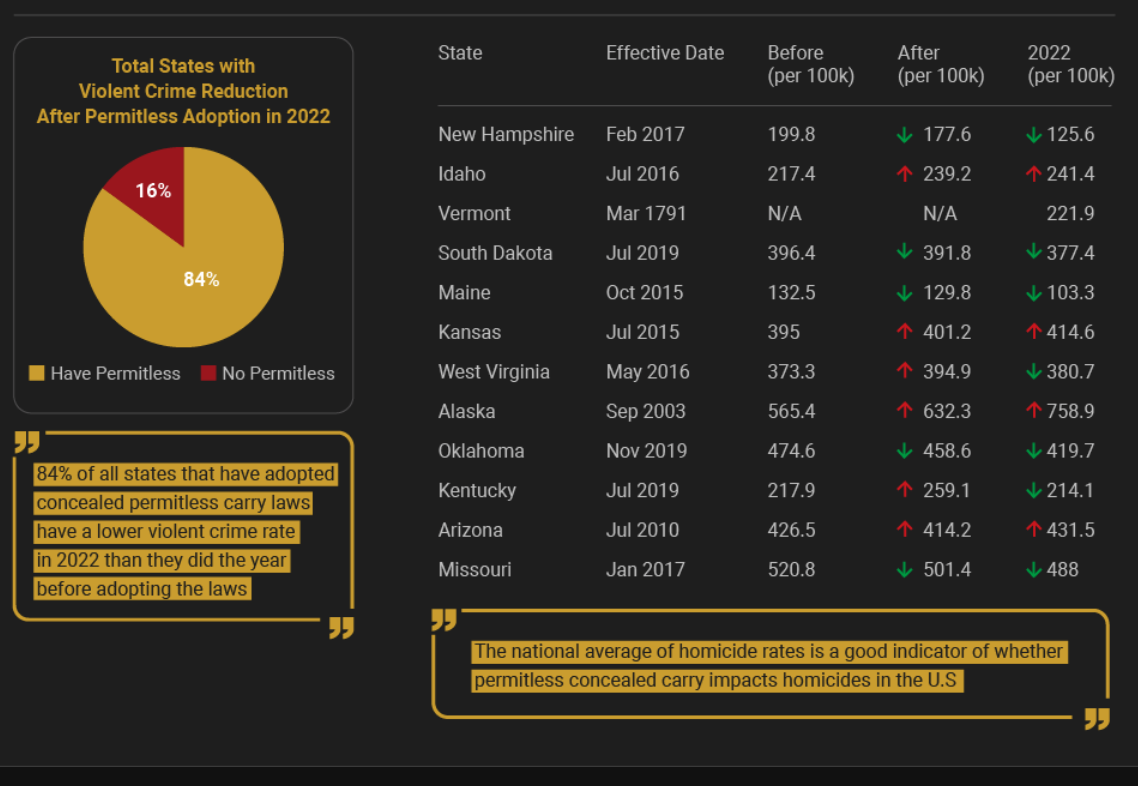
States with the Most Relaxed Open Carry Laws and Crime
67% of states with concealed permitless carry have a violent crime rate below the national average.
Note: Vermont has never required permits for concealed carry and has never exceeded the national average of violent crimes.
State Homicides Before and After Permitless Carry
83% of states that have had permitless concealed carry for more than two years have homicide rates at or below the national average.
Crime Rates in Concealed Carry States
Washington, D.C., has the highest rate of violent crime and homicides per capita, with strict open carry laws requiring permits to purchase and carry.
However, it seems that whether one can open carry, conceal carry, or only do so with a permit, there is little effect on firearm-related homicides and violent crimes.
States with the Highest Violent Crime Rates (2022)
Of the five states with the lowest violent crime rates, only two allow concealed carry without a permit.
Note: Mississippi has restrictions regarding where and how individuals can conceal carry a firearm.
- New Mexico – Permit Required for Concealed Carry – 778.28/100k
- Louisiana – Conceal Carry (No Permit) – 639.44/100k
- Colorado – Open Carry (with restrictions) – 423.06/100k
- South Carolina – Permit Required – 530.68/100k
- Arkansas – Conceal Carry (No Permit) – 671.93/100k
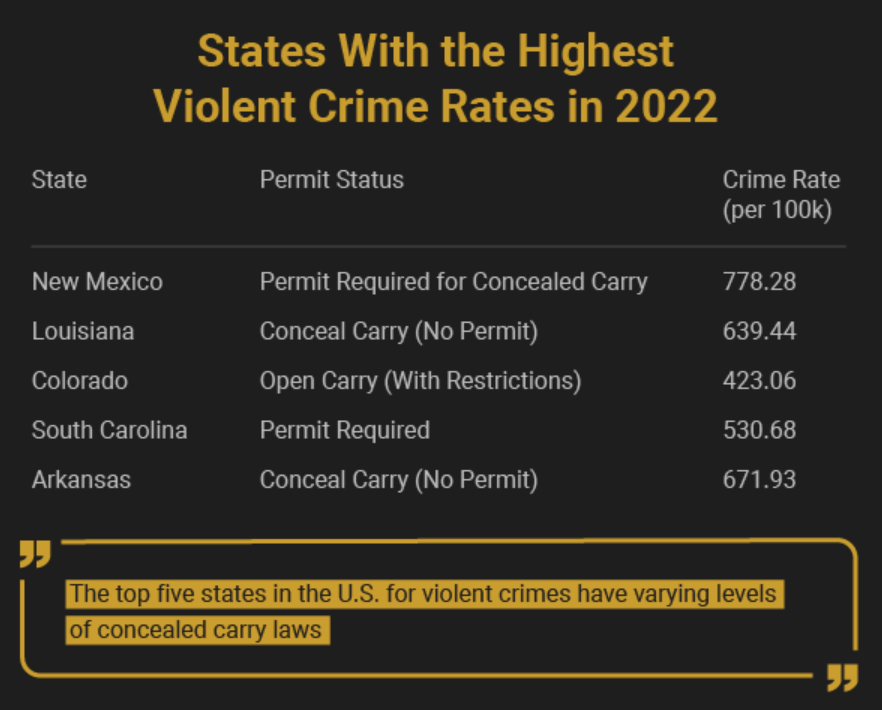
States with the Lowest Violent Crime Rates (2022)
Of the five states with the lowest violent crime rates, three allow concealed carry without a permit.
Note: Mississippi has restrictions regarding where and how individuals can conceal carry a firearm.
- Maine – Conceal Carry (no permit) – 108.58/100k
- New Hampshire – Conceal Carry (no permit) – 146.38/100k
- Vermont – Conceal Carry (no permit) – 173.42/100k
- New Jersey – Permit Required – 195.37/100k
- Connecticut – Permit Required – 181.59/100k
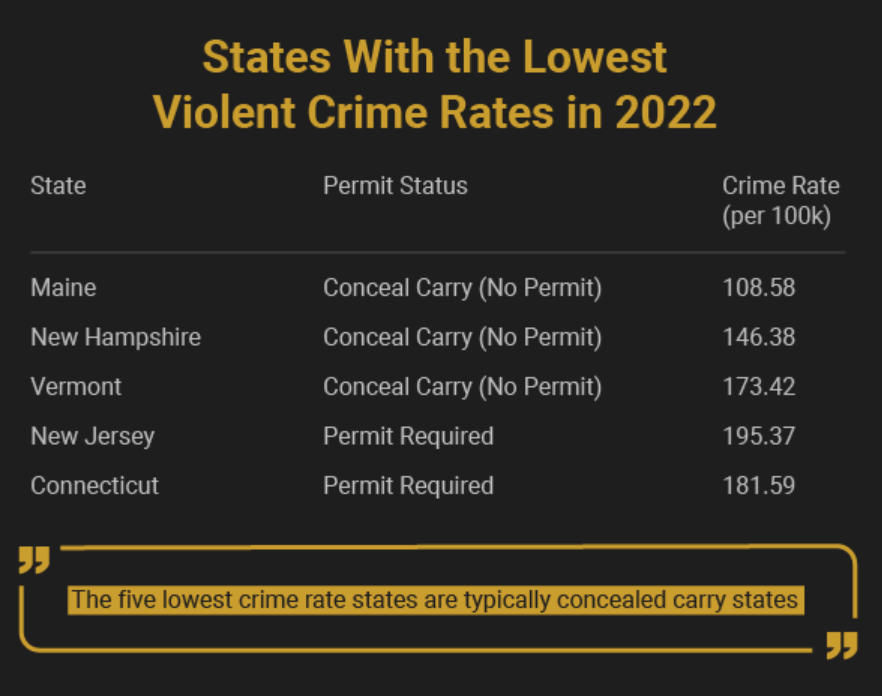
States with the Highest Firearm Homicides (2022)
The five states with the highest firearm-related homicide rates in 2022 include only three with permitless concealed carry laws. Mississippi places restrictions on where and how one can conceal a firearm, and New Mexico law states that the firearm must be visible.
- Mississippi – Limited Concealed Carry – 17.3
- Louisiana – Permit Required – 16.0
- Alabama – Permitless Concealed Carry – 12.4
- Missouri – Permitless Concealed Carry – 10.2
- New Mexico – Permit Required – 10.3
Note: These are per capita rates measured at one for every 100,000 people.
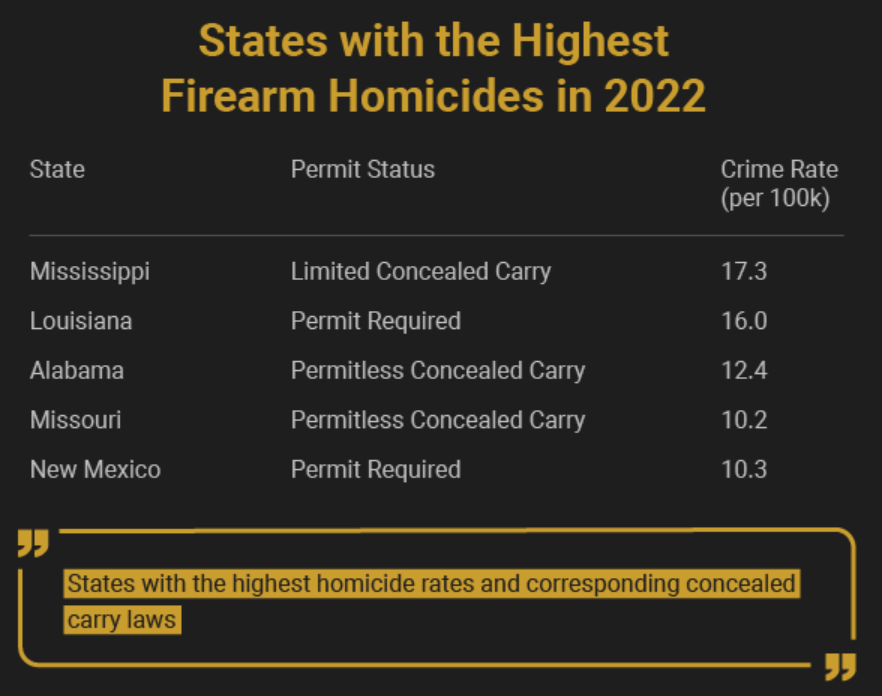
States with the Lowest Firearm Homicides (2022)
Four of the five states with the lowest firearm-related homicides have permitless carry.
- Wyoming – Conceal Carry (no permit)
- Vermont – Conceal Carry (no permit)
- Rhode Island – Permit Required
- North Dakota – Conceal Carry (no permit)
- New Hampshire – Conceal carry (no permit)
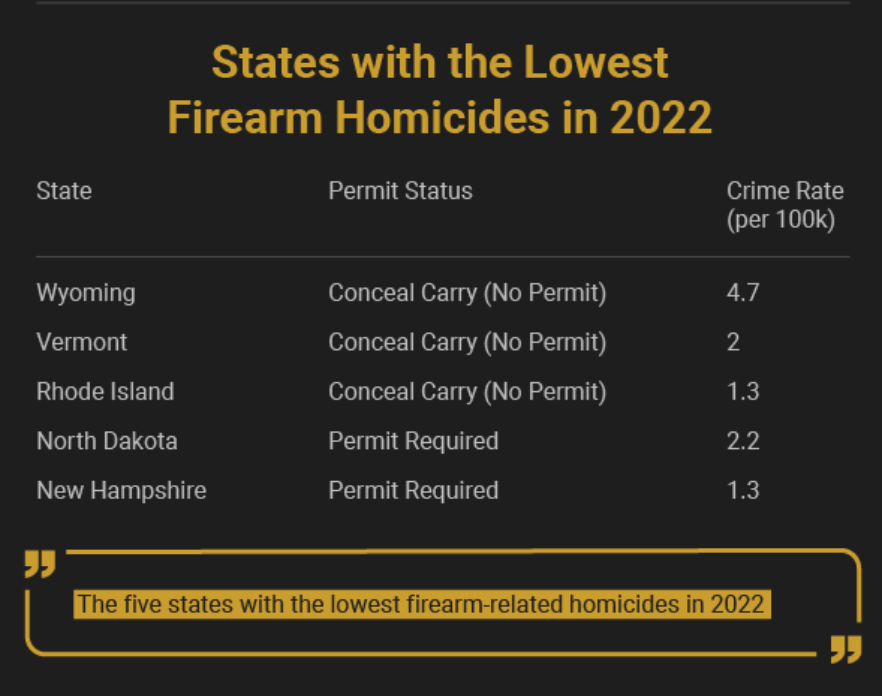
Concealed Carry Permit Holders and Committing Crimes
Concealed carry permit data is protected information and, therefore, unavailable to the public. The FBI, DOJ, and BJS do not collect data on CCW holders and violence. While there is much speculation on how many concealed carry permit holders commit violent crimes with their firearms, the data isn’t sound.
However, we can look into incarceration rates and Federal firearms charges to better understand how people obtained their firearms and if they were possessing them lawfully.
In a 2019 study, only 10% of inmates who used a firearm during the commission of a crime purchased it lawfully. The remaining respondents acquired their firearms by theft, black market sales, and friends or family members.
Furthermore, a study in 1997 found that 83% of offenders arrested with a firearm were already prohibited from possessing it due to prior offenses. In 2012 and 2018, Missouri, Alabama, Texas, Georgia, South Carolina, and North Carolina have consistently held the highest record of felons in possession of a firearm (before those states relaxed conceal carry requirements).
Firearm offenders are more likely than non-firearm offenders to re-offend in a shorter period. A 2005 report revealed that 68.1% of firearm offenders reoffended within 8 years. The issue of whether those concealed carrying are doing so lawfully is further compounded by the fact that the average incarceration period for firearm offenders in 2018 was only 64 months.
Therefore, it stands to reason that those incarcerated for firearm-related violent crimes were not in lawful possession of a firearm and were not permitted to conceal carry.
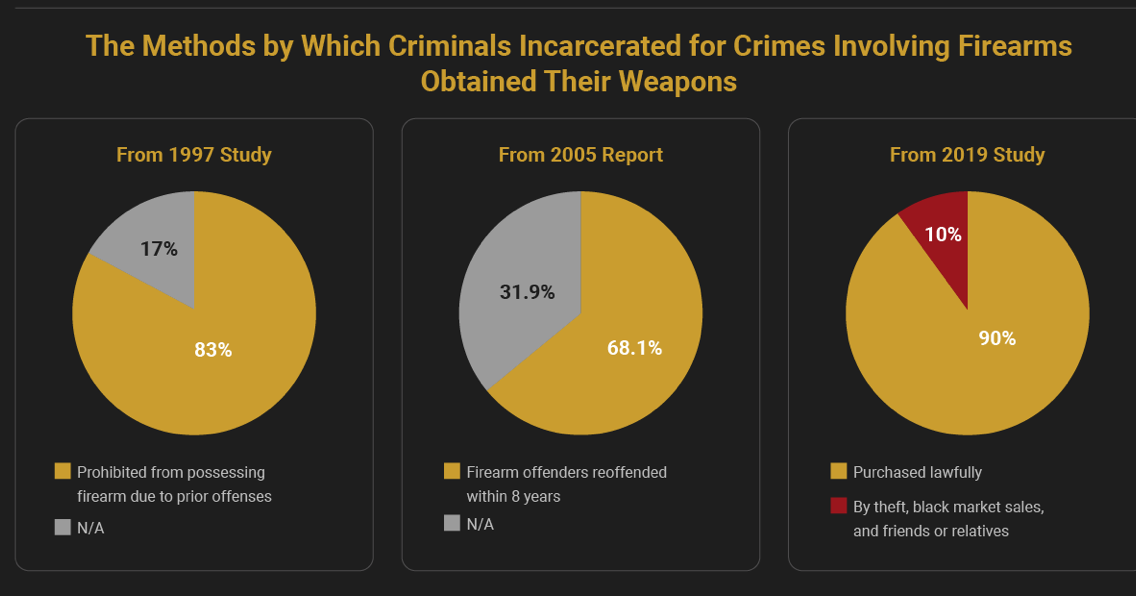
Defensive Use Cases 2023
In August 2023, there were thirteen incidents where women effectively used firearms in defensive situations. While the FBI, DOJ, and BJS don’t track defensive use cases (especially where a bullet is not fired), it’s important to consider how often those carrying firearms use them as deterrents and non-lethal defense.
According to recent estimates, there are 1.67 million cases of defensive use of a firearm in the U.S. Nearly 10% of these cases occurred in public, while 3.2% occurred in a workplace. However, in 81.9% of cases where a firearm was used in defense, no shot was fired.
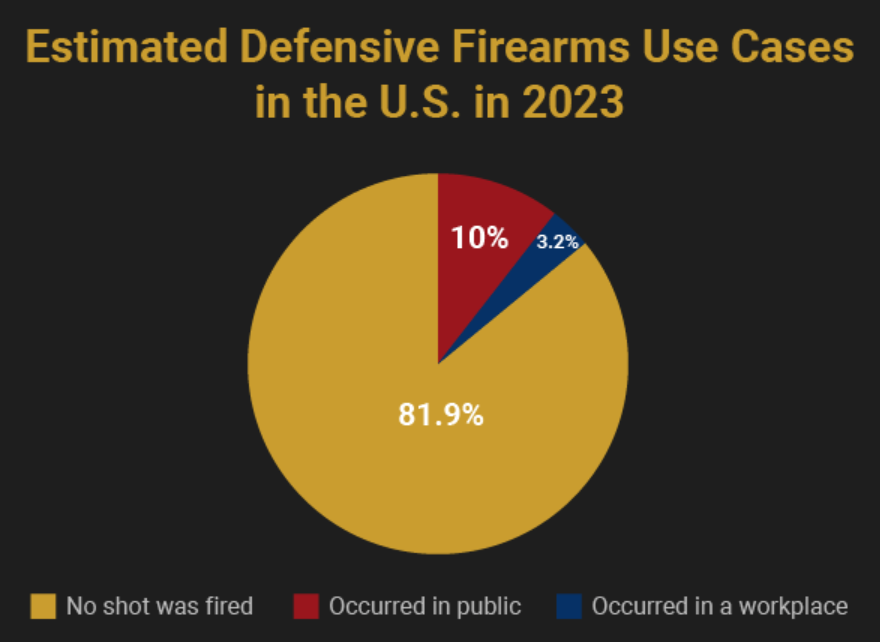
Sources:
- National Firearms Survey (Defensive Use)
- Women Use Firearms for Defense
- Prison Firearm Ownership Survey
- 1997 Study on Inmates and Firearms
- Felons in Possession of Firearms 2018
- Felons in Possession of Firearms 2012
- Firearm Offenses Recidivism Rates
LegalReader thanks our friends at Ammo.com for permission to republish this piece. The original is found here.

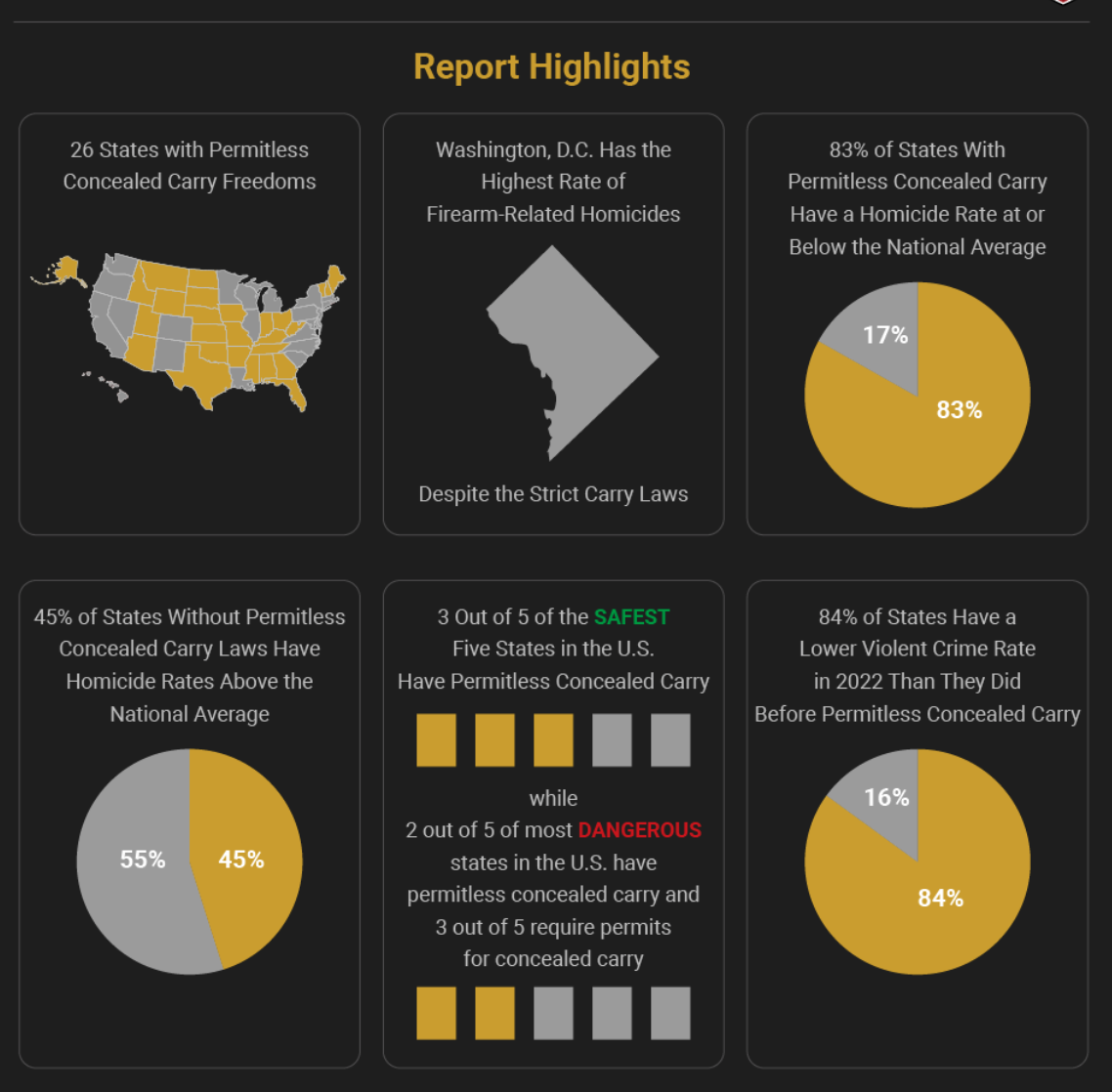
Join the conversation!